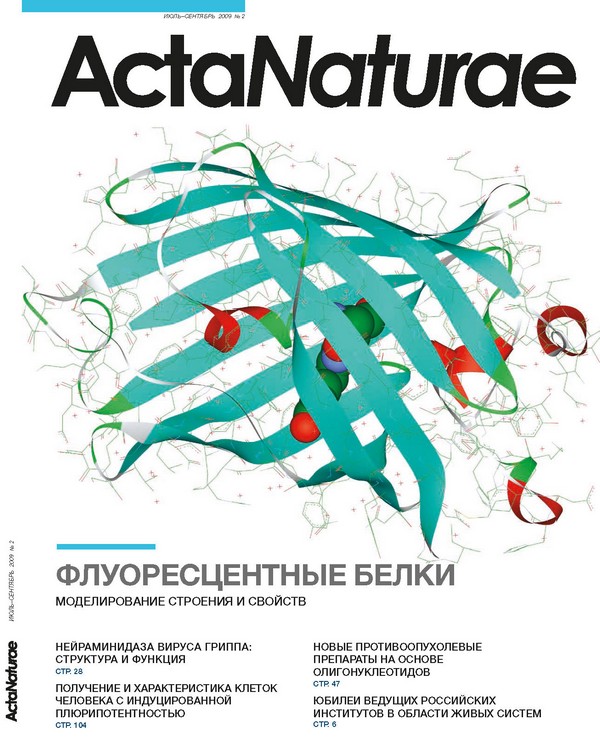A Comparison of Target gene Silencing using Synthetically Modified siRNA and shRNA That Express Recombinant Lentiviral Vectors
- Authors: Spirin PV1,2, Baskaran D1,2, Rubtsov PM1,2, Zenkova MA1,2, Vlassov VV1,2, Chernolovskaya EL1,2, Prassolov VS1,2
-
Affiliations:
- Engelghardt Institute of Molecular Biology, Russian Academy of Sciences
- Institute of Chemical Biology and Fundamental Medicine, Siberian Branch, Russian Academy of Sciences
- Issue: Vol 1, No 2 (2009)
- Pages: 86-90
- Section: Articles
- URL: https://actanaturae.ru/2075-8251/article/view/10819
- DOI: https://doi.org/10.32607/20758251-2009-1-2-86-90
- ID: 10819
Cite item
Abstract
Full Text
The controlled silencing of target genes is important both for molecular biological studies and for related applied sciences: in particular, modern biomedicine. Among the many gene silencing approaches (which include the use of anti-sense RN A, ribozymes, chemical blockers, and targeted mutagenesis), the most efficient approach is based on RN A-interference. RN A interference is a highly specific mechanism for the posttranscriptional silencing of target genes. It involves the degradation of the target gene mRN A. The degradation of mRN A occurs in a complex formed by short-interfering RN A oligonucleotides (siRN A) and cellular proteins such as endonucleases. The nucleotide sequence of siRN A is complementary to that of target gene mRN A. In the past couple of years, the use of siRN A has become widespread in studies of gene functioning and gene interaction. The use of siRN A as next generation therapeutic agents in biomedicine is also being explored. It is possible that, in the near future, siRN A will be used for treating viral and oncological diseases. Currently, short synthetic 21–22-bp double-stranded siRNA molecules are widely used to silence mammalian genes. A number of commercial firms synthesize siRN A oligonucleotides. These commercial firms have siRN A design tools available on their websites (e.g., www.qiagen.com). Synthetic siRN A oligonucleotides are transferred into cells in vitro by lipofection. Since siRN A induces the degradation of mRN A (and not the protein directly), the silencing effect does not occur immediately after cell transfection. The silencing effect is generally noticeable within 18 hours of transfection: however, in the case of stable proteins, the silencing effect may be noticeable only 24–48 hours after transfection. The longevity of siRN A silencing is comparatively short, and different sources claim that the silencing effect lasts for 3–5 cell divisions. It should be noted that the longevity of siRN A silencing may depend on many factors, in particular the nature of the cells being transfected. Approaches have been developed to synthetically modify siRN A oligonucleotides, which enhance the longevity of siRN A silencing in cells. Such synthetically modified siRN A oligonucleotides are useful for the post-transcriptional silencing of genes that encode proteins with a long half-life.About the authors
P V Spirin
Engelghardt Institute of Molecular Biology, Russian Academy of Sciences; Institute of Chemical Biology and Fundamental Medicine, Siberian Branch, Russian Academy of Sciencesul. Vavilova 32, Moscow, 119991; Lavrentiev pr. 8, Novosibirsk, 630090
D Baskaran
Engelghardt Institute of Molecular Biology, Russian Academy of Sciences; Institute of Chemical Biology and Fundamental Medicine, Siberian Branch, Russian Academy of Sciencesul. Vavilova 32, Moscow, 119991; Lavrentiev pr. 8, Novosibirsk, 630090
P M Rubtsov
Engelghardt Institute of Molecular Biology, Russian Academy of Sciences; Institute of Chemical Biology and Fundamental Medicine, Siberian Branch, Russian Academy of Sciencesul. Vavilova 32, Moscow, 119991; Lavrentiev pr. 8, Novosibirsk, 630090
M A Zenkova
Engelghardt Institute of Molecular Biology, Russian Academy of Sciences; Institute of Chemical Biology and Fundamental Medicine, Siberian Branch, Russian Academy of Sciencesul. Vavilova 32, Moscow, 119991; Lavrentiev pr. 8, Novosibirsk, 630090
V V Vlassov
Engelghardt Institute of Molecular Biology, Russian Academy of Sciences; Institute of Chemical Biology and Fundamental Medicine, Siberian Branch, Russian Academy of Sciencesul. Vavilova 32, Moscow, 119991; Lavrentiev pr. 8, Novosibirsk, 630090
E L Chernolovskaya
Engelghardt Institute of Molecular Biology, Russian Academy of Sciences; Institute of Chemical Biology and Fundamental Medicine, Siberian Branch, Russian Academy of Sciencesul. Vavilova 32, Moscow, 119991; Lavrentiev pr. 8, Novosibirsk, 630090
V S Prassolov
Engelghardt Institute of Molecular Biology, Russian Academy of Sciences; Institute of Chemical Biology and Fundamental Medicine, Siberian Branch, Russian Academy of Sciences
Email: prasolov@eimb.ru
ul. Vavilova 32, Moscow, 119991; Lavrentiev pr. 8, Novosibirsk, 630090
References
- Vilgelm A.E., Chumakov S.P., Prasolov V.S. // Molecular Biology 2006. Vol. 40. -3 pages 1-18.
- Volkov A.A., Kruglova N.S., Meschaninova M.I., et al. // Oligonucleotides. 2009. Jun;19(2):191-202.
- Shuey D.J., McCallus D.E., Giordano T. // Drug Discov. Today. 20027. 1040–1046.
- Stanisławska J., Olszewski W.L. // Arch. Immunol. Ther. Exp. 200553. 39–46.
- Elbashir S.M., Harborth J., Weber K., Tuschl T. // Methods. 200226. 199–213.
- Brummelkamp T.R., Bernards R., Agami R. // Science. 2002296. 550–553.
- Satake N., Maseki N., Kozu T., et al. // British Journ. of Haemat. 199591: 892-898.
- Peterson L.F., Zhang D.E. // Oncogene. 2004; 23(24):4255-62.
- Kravchenko J.E., Ilyinskaya G.V., Komarov P.G., et al. // Proc. Natl. Acad. Sci. USA. 2008. Apr 29;105(17):6302-7.
Supplementary files







